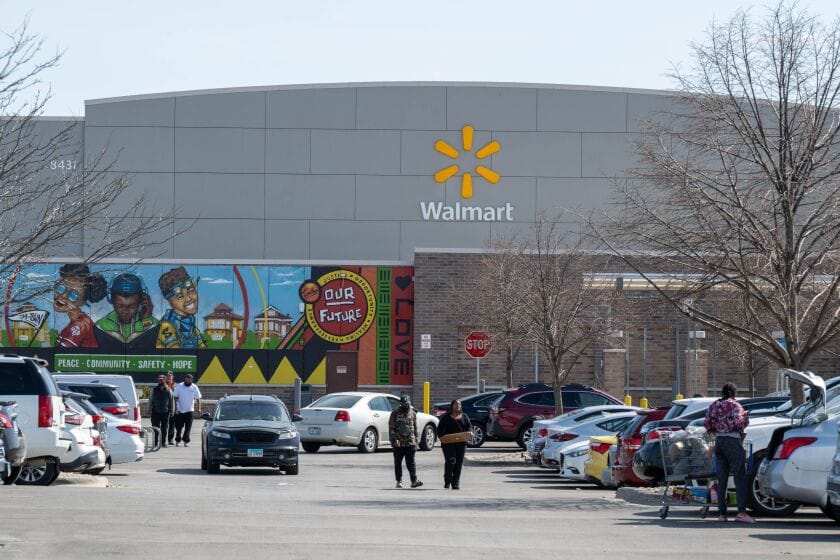Walmart’s Supply Chain: A 5-Minute Short Read on the Engine Behind the World’s Biggest Retailer

Imagine walking into a Walmart. The shelves are perfectly stocked—bananas so yellow they belong in an ad, TVs stacked in perfect symmetry, and the latest toys ready to fly off the shelves. Now imagine the sheer effort it takes to make that happen. Walmart’s supply chain isn’t just a logistics system; it’s a story of precision, innovation, and adaptability.
Let’s pull back the curtain and journey into this supply chain masterpiece. In just five minutes, you’ll learn how Walmart became the gold standard for retail logistics and what lessons you can take away from their incredible playbook.
Chapter 1: The Dance with Suppliers
Every great story starts with relationships. For Walmart, it begins with its suppliers. This isn’t your typical “drop off and go” relationship—it’s a collaborative dance where every step is carefully coordinated.
Suppliers are more than vendors; they’re partners. Walmart shares real-time sales data with them, offering insights into exactly what’s selling and what isn’t. Imagine knowing your dance partner’s every move before they make it—that’s the magic here.
Quick Scene:
It’s February, and Valentine’s Day chocolates are flying off shelves. Walmart’s data tells suppliers exactly when stock is running low, ensuring shipments arrive before customers start side-eying leftover Halloween candy. The result? Happy customers and no wasted inventory.
Takeaway: Collaboration isn’t just about working together; it’s about sharing the right information at the right time.
Chapter 2: The Beating Heart—Distribution Centers
Next stop, Walmart’s distribution centers (DCs)—the beating heart of its supply chain. These DCs aren’t just warehouses; they’re high-energy hubs where products move faster than a Black Friday checkout line.
Walmart uses a hub-and-spoke model, where distribution centers act as central nodes connecting to stores. Think of it as a spider web: efficient, organized, and ready to catch anything.
But here’s the real secret: cross-docking. Picture this—an inbound truck arrives with goods, but instead of letting them sit around, the products are immediately loaded onto outbound trucks headed for stores. It’s a relay race, not a waiting game.
Quick Scene:
A truck of chips arrives at a DC on a Tuesday morning. By afternoon, those chips are on their way to stores in time for Wednesday’s snack aisle rush. They never even had time to say “warehouse.”
Takeaway: Time is money. The less time products spend sitting still, the more efficient your operation.
Chapter 3: The Road Warriors—Walmart’s Truck Fleet
Let’s hit the road—Walmart owns one of the largest private trucking fleets in the U.S. This isn’t just about bragging rights. Owning its fleet gives Walmart control over delivery schedules, costs, and even the quality of the transport experience.
But it’s not just about having trucks; it’s about having smart trucks. Walmart uses tech like RFID to track shipments and ensure nothing gets lost in transit. And for food products? Blockchain technology helps trace every item back to its source, ensuring safety and transparency.
Quick Scene:
A batch of spinach is flagged for a recall. Thanks to blockchain, Walmart traces it back to the exact farm in 2.2 seconds. Crisis averted, customers safe.
Takeaway: Control and visibility are your best friends in logistics.
Chapter 4: A Greener Walmart
No story about Walmart is complete without its sustainability chapter. Walmart isn’t just moving products—it’s moving toward a greener future.
Through Project Gigaton, Walmart aims to eliminate one billion metric tons of greenhouse gases from its supply chain by 2030. That’s not just impressive—it’s transformative.
Quick Scene:
Walmart analyzes truck routes and finds that shaving just one mile off each route saves the company millions in fuel costs—and reduces emissions significantly. Efficiency isn’t just profitable; it’s sustainable.
Takeaway: Even the smallest tweaks can make a massive impact on both your bottom line and the environment.
Chapter 5: The Digital Frontier—E-Commerce Revolution
In the grand finale of this story, Walmart enters the digital age. Competing with giants like Amazon isn’t easy, but Walmart is rewriting the rules of e-commerce.
They’ve deployed drones to test same-day deliveries, introduced robotic systems in warehouses to pack online orders, and partnered with services like DoorDash for last-mile delivery. Walmart’s online supply chain isn’t just fast—it’s personal.
Quick Scene:
A customer orders groceries online. Within hours, their avocados, eggs, and milk are delivered fresh, thanks to Walmart’s optimized cold-chain logistics. It’s e-commerce, but it feels like magic.
Takeaway: Adapting to digital isn’t optional—it’s survival.
The Final Chapter: What Walmart Can Teach Us
Every great story has lessons, and Walmart’s supply chain is no different. Here’s what you can take away:
- Collaboration is Key: Build partnerships that share insights, not just transactions.
- Speed Wins: Whether it’s cross-docking or optimized routes, time saved is value gained.
- Think Big, Act Green: Sustainability isn’t just ethical—it’s smart business.
- Adapt and Innovate: Embrace technology to stay ahead of the game.
Epilogue: The Legacy of Walmart’s Supply Chain
Walmart’s supply chain isn’t just a system—it’s a story of resilience, innovation, and ambition. It’s what transforms the everyday task of restocking shelves into a global operation that supports millions of families.
So, next time you walk into a Walmart or shop online, take a moment to appreciate the dance, the race, and the journey that brought those products to you.
